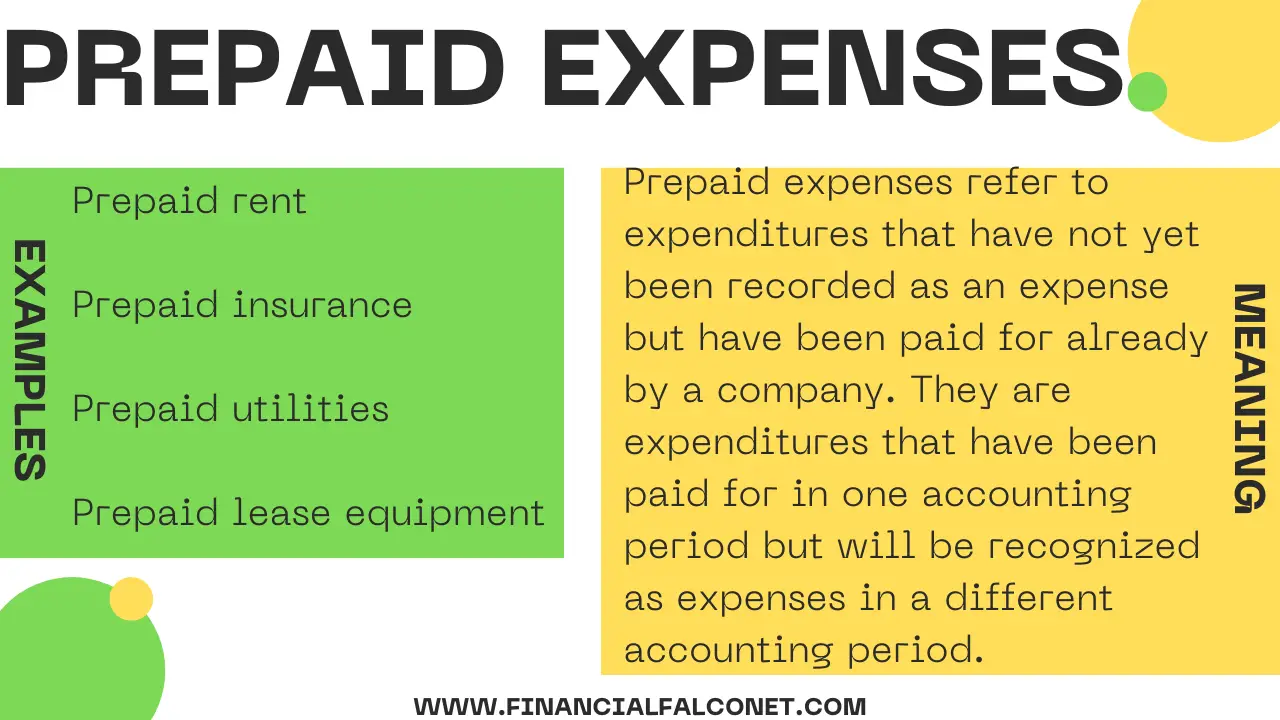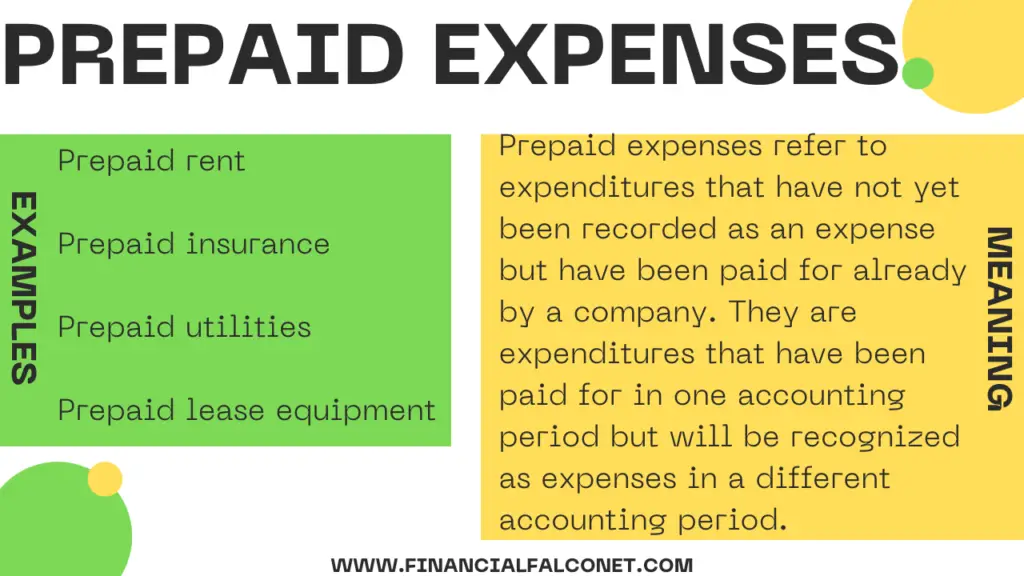
Why Prepaid Expenses Appear in the Current Asset Section of the Balance Sheet
Companies may pay for certain goods or services in advance. If this happens, the company records such prepayment as prepaid expenses; meaning that they made a payment for the good or service that will be received before they get it. The prepayment for rent or insurance is the two most common prepaid expenses recorded by companies. But why do companies make prepayments for these services and why do prepaid expenses appear in the current asset section of the balance sheet? We shall discuss this after we have a better understanding of prepaid expenses.
Read about: Is Accumulated Depreciation an Expense?
What are prepaid expenses?

Due to the fact that prepaid expenses are paid for in one accounting period and then get used up in a different accounting. They are therefore first recorded as assets since they bring future economic benefits, hence prepaid expenses appear in the section of the balance sheet containing the company’s current assets. They then get expensed at the time when the benefits are realized by the company based on the accounting matching principle. The current asset account records the portion of the prepaid expense that has not yet been used up whereas the portion that has been used up gets recorded on the company’s income statement as expenses.
In following the matching principle, when a prepayment is made by a company for a good or service that it will receive in the future, it is first recorded as a prepaid expense, and the expense is later allocated once it has been used up. The journal entries made to recognize used-up prepayments are known as adjusting entries. These adjusting entries are made to ensure that the company’s expenses get recognized within the same accounting period as when they are incurred.
Effect of prepaid expenses on financial statements
When companies make prepayments for either rent or insurance, the prepayment does not affect the company’s statement of financial position, cash flow statement, or income statement. This is because, at the time of the prepayment, the prepaid expenses appear in the section of the balance sheet containing the company’s current assets. Since the prepayment was also made using cash which is also a current asset, it means the company’s assets remain unchanged.
Once the period the prepayment covers begins, that is when the company’s financial statements start getting affected. For instance, if a company makes a prepaid rent payment that covers January to December of 2023, once the month of January passes, they will start expending the rental payment using the accounting credit and debit rules. Since the initial prepayment for January is used up, it gets recorded as a rent expense; meaning it is no longer an asset to the company but part of the company’s expenses.
By this, the company’s current asset account gets reduced by the amount of prepayment which has now been used up while its expense account gets increased by the same amount.
Are prepaid expenses in an income statement?
Read about: Is accounts receivable a current asset?
Why prepaid expenses appear in the current asset section of the balance sheet
Assets are items that bring economic value to their owners either immediately or in the future. This economic value comes in the form of easing business operations, reducing expenses, or increasing revenue. Assets usually comprise current and non-current assets.
Current assets are resources owned by companies. These resources can be easily convertible to cash and the time frame of conversion to cash is usually within 12 months. Due to this short time frame of conversion to cash, current assets are said to be easily liquid. Current assets bring value to their owners within a short period of time. Common examples of current assets include prepaid expenses, accounts receivable, inventory, short-term investments, and cash.
Prepaid expenses appear in the current section of the balance because these prepayments usually cover a period of one year or less. This means that the company derives benefits from the payment within 12 months or less. And the current section of the balance sheet is the portion of the balance sheet where companies record all resources they own whose benefits they can enjoy within a short period of one year.

Read about: Notes payable asset or liability?
Common prepaid expenses
- Prepaid rent
- Prepaid insurance
- Prepaid utilities
- Prepaid lease equipment
Prepaid rent
Prepaid rent refers to the rental amount paid prior to the rental period for which the payment was made. The period covered by the prepayment usually varies based on the property lease agreement. Thus, it could be monthly, quarterly, or yearly although monthly payments are the most common. When businesses pay their rent earlier than they are used, they will record the payment as prepaid rent and when the rent is expensed, they make an adjusting journal entry that moves it to the rent expense account.
Where does prepaid rent go on a balance sheet?
Is prepaid rent an asset on the balance sheet?
Prepaid insurance
Prepaid insurance refers to the amount paid to insurance companies by businesses or individuals in advance for insurance coverage on various assets such as vehicles, homes or business premises, machinery, health, life, etc. The insurance prepayment is usually made at the beginning of each month to provide the business or individual with insurance coverage for that month.
Although monthly insurance coverage is more common, yearly or six months payment options are also available and most companies use that option. Hence when they make the payment, it will be recorded as prepaid insurance first and later on, when it has been exhausted, it becomes an insurance expense.
Prepaid utilities
The drive for sustainable use of resources has brought about the introduction of prepayment for various utilities such as internet, cable TV, water supply, electricity, gas, telephone, waste disposal, etc. When companies pay in advance for utility services, it is recorded as prepaid utilities. As it is with other prepaid expenses, the utility will be expensed once it gets consumed by the company. At that time, it will be recorded as utility expense.
Prepaid lease equipment
A prepaid lease is a contract that grants one party the right to use a tangible asset of another party after payment of an agreed sum. Companies that lease equipment may make an advance payment for the equipment. These advance payment gets recorded as prepaid lease equipment. The difference between a lease and a sale is that in the case of a lease, the owner still retains their right to the equipment. The company that collected the equipment on lease will have to return the equipment to the owner once the lease period is over.
Prepaid lease equipment payments are recorded as prepaid expenses in the section of the balance sheet where the current assets of the company are recorded. Adjusting journal entries are made for the equipment prepayment as the time it covers passes.
Read about: Is Merchandise Inventory an Asset?
Conclusion
When companies make prepayments, two different journal entries are made to record the transaction. The first journal entry is made when the prepayment is made and the second journal entry also known as the adjusting journal entry is made when the money paid has been exhausted due to the passing of the time that the prepayment covered.
Prepaid expenses appear in the section of the balance sheet where current assets are recorded because they are an asset to the company that made the prepayment. This is due to the fact that most prepayments are expected to be exhausted at most, within 12 months from the time of prepayment.


